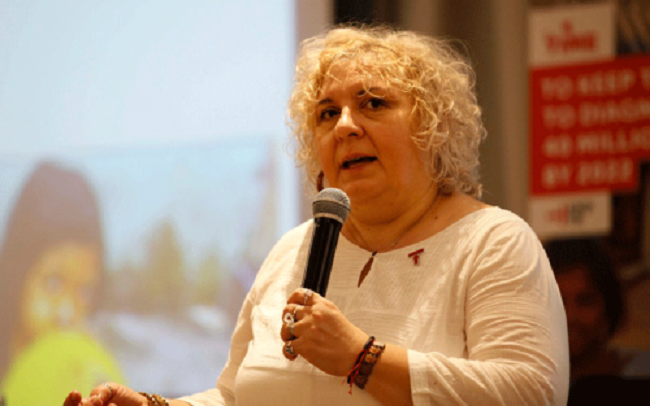In the wake of new data released by the World Health Organisation (WHO) in the Global Tuberculosis (TB) Report 2022 showing an increase in TB incidence in 2021 for the first time in almost two decades and a further increase in mortality – with 4,400 people dying per day – the Stop TB Partnership expressed alarm over this dire situation and the impact it will have on people, health care systems and economies.

The Stop TB Partnership urges the international community to understand the health threat posed by an airborne disease with drug-resistant strains which is showing an upward trend in mortality and incidence, and to take immediate action by providing urgently needed financial investment to combat TB.
The TB incidence rate (the number of new people developing TB per 100 000 population per year) rose by 3.6% between 2020 and 2021, reversing declines of about 2% per year for most of the past two decades. Globally, the estimated number of deaths from TB increased between 2019 and 2021, reversing 14 years of decline between 2005 and 2019.
In 2021, 1.6 million people died from TB, including 187,000 people with HIV. Between 2018-2021, 26.3 million people were treated for TB. This number is a far cry from the 40 million targets set for 2018-2022 at the 2018 UN High-Level Meeting on TB (UNHLM).
“It has become very clear that we now have a very dangerous situation on our hands with an airborne disease that is completely neglected, and which has been allowed to run rampant over the past two years. Transmission has gone up and infections have been left undiagnosed and untreated for longer periods, allowing tuberculosis to fester and develop into advanced forms of the disease, and ultimately leading to higher death rates.
“The World Health Organisation report outlines this in black and white – and from seeing this in writing, every single human being should be up in arms and demand that their governments and decision-makers take immediate action, as everyone is now at risk,” said Dr. Lucica Ditiu, Executive Director of the Stop TB Partnership.
“Despite this shockingly upward trend of TB mortality and infection rates, funding for fighting TB decreased in 2020 and 2021 from an already pathetically low level. This is infuriating and it makes me wonder why there is such a lack of investment for TB. Is it because governments do not care for their own people? Is it because the life of a person dying from TB is less important or is it because TB affects mainly poor people from poorer countries, and it is more comfortable to simply neglect them?” added Dr. Ditiu.
The latest figures in the report predict that TB will replace COVID-19 as the world’s deadliest infectious disease killer. In fact, every day 4,400 people – or 3 people every minute – die from this preventable, treatable, and curable disease.
The report did highlight some good news. TB treatment success rates were maintained high during the pandemic, some high TB burden countries, primarily in Africa, demonstrated that progress was still possible, and a few countries demonstrated great recovery after huge setback.
The number of people provided with TB preventive treatment recovered in 2021 to close to 2019 levels, but the cumulative total of 12.5 million between 2018 and 2021 was still a long way off the target of 30 million by the end of 2022.
“Despite world leaders agreeing to an ambitious set of commitments at the 2018 UN High-Level Meeting on TB (UNHLM), they have only provided a fraction (less than a half) of the funding needed to meet these commitments, which is why we are now on track to achieve only one of ten UNHLM targets before the 2022 December deadline. With $5.4 billion committed in 2021, TB funding represents just 41% of the $13 billion target agreed by Heads of State and Government. To be honest, I think we should all be outraged after it has become obvious that all these commitments have been in vain. This is a clear statement that humanity does not want to end TB,” Dr. Ditiu added.
The Stop TB Partnership published the Global Plan to End TB 2030-2030 in July 2022 where it outlined the priority actions and estimated resources needed to end TB as a global health threat by 2030. A total of $250 billion is needed to end TB by 2030 with an impressive return on investment of $40 per one dollar invested.
